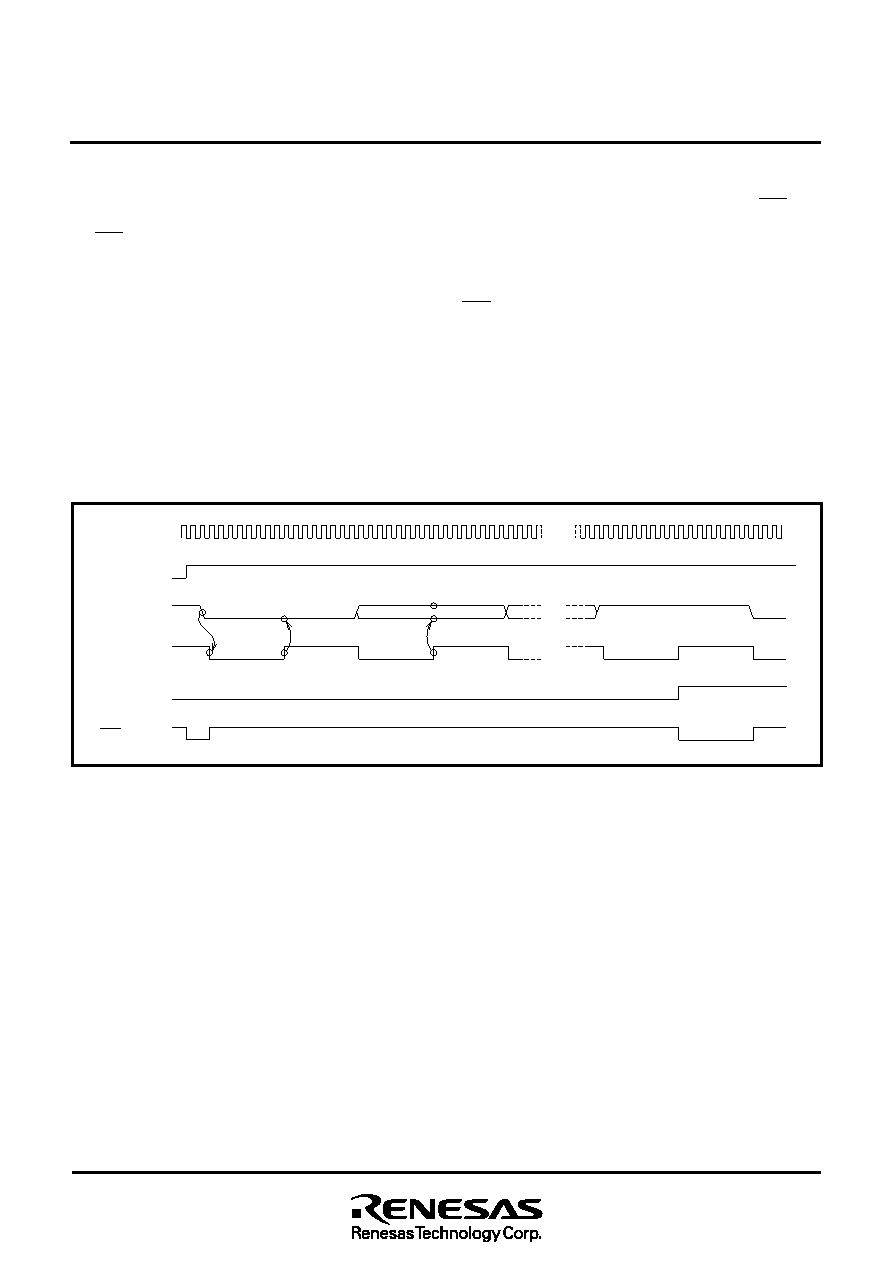- 您現(xiàn)在的位置:買賣IC網(wǎng) > PDF目錄45038 > M37905M8C-XXXSP 16-BIT, MROM, 20 MHz, MICROCONTROLLER, PDIP64 PDF資料下載
參數(shù)資料
| 型號(hào): | M37905M8C-XXXSP |
| 元件分類: | 微控制器/微處理器 |
| 英文描述: | 16-BIT, MROM, 20 MHz, MICROCONTROLLER, PDIP64 |
| 封裝: | 0.750 INCH, 1.78 MM PITCH, PLASTIC, SDIP-64 |
| 文件頁(yè)數(shù): | 65/103頁(yè) |
| 文件大小: | 1402K |
| 代理商: | M37905M8C-XXXSP |
第1頁(yè)第2頁(yè)第3頁(yè)第4頁(yè)第5頁(yè)第6頁(yè)第7頁(yè)第8頁(yè)第9頁(yè)第10頁(yè)第11頁(yè)第12頁(yè)第13頁(yè)第14頁(yè)第15頁(yè)第16頁(yè)第17頁(yè)第18頁(yè)第19頁(yè)第20頁(yè)第21頁(yè)第22頁(yè)第23頁(yè)第24頁(yè)第25頁(yè)第26頁(yè)第27頁(yè)第28頁(yè)第29頁(yè)第30頁(yè)第31頁(yè)第32頁(yè)第33頁(yè)第34頁(yè)第35頁(yè)第36頁(yè)第37頁(yè)第38頁(yè)第39頁(yè)第40頁(yè)第41頁(yè)第42頁(yè)第43頁(yè)第44頁(yè)第45頁(yè)第46頁(yè)第47頁(yè)第48頁(yè)第49頁(yè)第50頁(yè)第51頁(yè)第52頁(yè)第53頁(yè)第54頁(yè)第55頁(yè)第56頁(yè)第57頁(yè)第58頁(yè)第59頁(yè)第60頁(yè)第61頁(yè)第62頁(yè)第63頁(yè)第64頁(yè)當(dāng)前第65頁(yè)第66頁(yè)第67頁(yè)第68頁(yè)第69頁(yè)第70頁(yè)第71頁(yè)第72頁(yè)第73頁(yè)第74頁(yè)第75頁(yè)第76頁(yè)第77頁(yè)第78頁(yè)第79頁(yè)第80頁(yè)第81頁(yè)第82頁(yè)第83頁(yè)第84頁(yè)第85頁(yè)第86頁(yè)第87頁(yè)第88頁(yè)第89頁(yè)第90頁(yè)第91頁(yè)第92頁(yè)第93頁(yè)第94頁(yè)第95頁(yè)第96頁(yè)第97頁(yè)第98頁(yè)第99頁(yè)第100頁(yè)第101頁(yè)第102頁(yè)第103頁(yè)

63
M37905M4C-XXXFP, M37905M4C-XXXSP
M37905M6C-XXXFP, M37905M6C-XXXSP
M37905M8C-XXXFP, M37905M8C-XXXSP
PRELIMINAR
Y
Notice:
This
is not
a final
specification.
Some
parametric
limits
are
subject
to change.
16-BIT CMOS MICROCOMPUTER
MITSUBISHI MICROCOMPUTERS
succeedingly.
Once transmission has started, the TEi flag, TIi flag, and CTSi signal
are ignored until data transmission is completed.
Therefore, transmission does not stop until it completes event if, dur-
ing transmission, the TEi flag is cleared to “0” or CTSi input is set to
“1”.
The transmission start condition indicated by TEi flag, TIi flag, and
CTSi is checked while the TENDi signal shown in Figure 69 is “H”.
Therefore, data can be transmitted continuously if the next transmis-
sion data is written in the transmit buffer register and TIi flag is
cleared to “0” before the TENDi signal goes “H”.
Bit 3 (TXEPTYi flag) of UARTi transmit/receive control register 0
changes to “1” at the next cycle just after the TENDi signal goes “H”
and changes to “0” when transmission starts. Therefore, this flag can
be used to determine whether data transmission is completed.
When the TIi flag changes from “0” to “1”, the interrupt request bit of
the UARTi transmit interrupt control register is set to “1”.
Transmission
Transmission is started when bit 0 (TEi flag transmit enable flag) of
UARTi transmit/receive control register 1 is “1”, bit 1 (TIi flag) is “0”,
and CTSi input (in other words, transmit enable signal input from re-
ceiver) is “L”. The TIi flag indicates whether the transmit buffer is
empty or not. It is cleared to “0” when data is written in the transmit
buffer; it is set to “1” when the contents of the transmit buffer register
is transferred to the transmit register.
When all of the transmission conditions are satisfied, transmit data
is transferred to the transmit register, and transmit operation starts.
As shown in Figures 69 and 70, data is output from the TXDi pin with
the stop bit or parity bit specified by bits 4 through 6 of UARTi trans-
mit/receive mode register. The data is output from the least signifi-
cant bit.
When the transmit register becomes empty after the contents has
been transmitted, data is transferred automatically from the transmit
buffer register to the transmit register if the next transmit start condi-
tion is satisfied. Then, the next transmission is performed
Fig. 71 Receive timing example when 8-bit asynchronous communication with no parity and 1 stop bit selected
Start bit
Stop bit
Start bit
D0
D1
D7
Check to be “L” level
Starting at the falling
edge of start bit
Data fetched
fi or fEXT
REi
RXDi
Receive
clock
RIi
RTSi
相關(guān)PDF資料 |
PDF描述 |
|---|---|
| M37905M8C-XXXFP | 16-BIT, MROM, 20 MHz, MICROCONTROLLER, PQFP64 |
| M37905M6C-XXXSP | 16-BIT, MROM, 20 MHz, MICROCONTROLLER, PDIP64 |
| M37906M4H-XXXFP | 16-BIT, MROM, 20 MHz, MICROCONTROLLER, PDSO42 |
| M37906M6C-XXXFP | 16-BIT, MROM, 20 MHz, MICROCONTROLLER, PDSO42 |
| M37906M8C-XXXFP | 16-BIT, MROM, 20 MHz, MICROCONTROLLER, PDSO42 |
相關(guān)代理商/技術(shù)參數(shù) |
參數(shù)描述 |
|---|---|
| M37905T-PRB | 功能描述:DEV POD PROBE FOR M37900T2-RPD-E RoHS:否 類別:編程器,開發(fā)系統(tǒng) >> 配件 系列:- 產(chǎn)品培訓(xùn)模塊:Lead (SnPb) Finish for COTS Obsolescence Mitigation Program RoHS指令信息:IButton RoHS Compliance Plan 標(biāo)準(zhǔn)包裝:1 系列:- 附件類型:USB 至 1-Wire? RJ11 適配器 適用于相關(guān)產(chǎn)品:1-Wire? 設(shè)備 產(chǎn)品目錄頁(yè)面:1429 (CN2011-ZH PDF) |
| M37906F8CFP | 制造商:MITSUBISHI 制造商全稱:Mitsubishi Electric Semiconductor 功能描述:16-BIT CMOS MICROCOMPUTER |
| M37906F8CFP-T4 | 制造商:Renesas Electronics Corporation 功能描述:FLSH 16-BIT |
| M37906F8CSP | 制造商:RENESAS 制造商全稱:Renesas Technology Corp 功能描述:16-BIT CMOS MICROCOMPUTER |
| M37906M4C-XXXFP | 制造商:RENESAS 制造商全稱:Renesas Technology Corp 功能描述:16-BIT CMOS MICROCOMPUTER |
發(fā)布緊急采購(gòu),3分鐘左右您將得到回復(fù)。